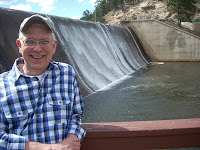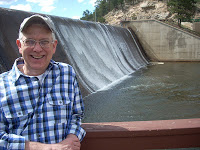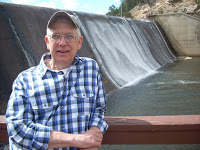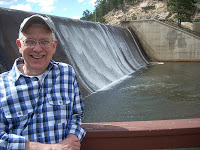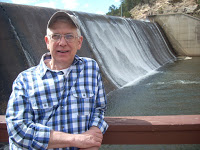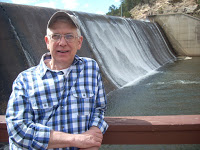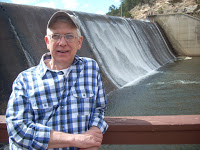professor pointed out how Americans love many things, everything from cars to
mashed potatoes. We celebrate the love of clothes, looks, hairdos, decorations,
and cities. We love our ball teams. But we don’t expect most of the things we
say we love to love us. Mostly we limit the hope of being loved to our relationships
with other humans except, of course, our pets, especially our dogs who we are
sure love us in return. In this story I’ve made an incomplete list of my
experiences of being loved by that one someone who figures centrally into our
American mythos of being loved, but obviously I’ve expanded my list to more
than that one and only—woman or man.
I loved her in so many ways in this most complicated relationship of my
life—one with a professional career, children, parents and siblings and in-laws
and many, many friends over a period of many years. I was happy about it
basking in such warm and complete love.
gay friend. I loved him, but I had no experience and didn’t understand the
order of things. He loved my wife and didn’t want to hurt my marriage. I loved
him but not in the way I finally realized he wanted me to love him. I was very
young. I think I hurt him deeply. Still our friendship flourished for many years.
loved me but whose life was too encumbered, whose imagination couldn’t deal
with what that might mean about himself and his life. As a result his love for
me became stunted. I loved what feeling I received from him although I hoped
he’d never want me to give up my married life for him. I also knew I’d never
ask him to give up his married life for me.
a barrier around his feelings. Oh he wanted sex with me but he didn’t want to
give or receive the feelings of it all. So when we started the sex, I agreed to
his demand there be no emotions since I realized the advantage of his program
to my marriage. Still I wondered at his request but like a good soldier turned
off my emotions—at least some of them—but not so much as to miss experiencing
the thrills our play created.
that my love, while real and deep, was quite different than his. Now I was the
one defending the two of us from one another for quite complicated reasons. I
loved being loved by him although I could not imagine living with him.
except his adoration. We lived in two greatly different worlds, his with Okie
twang, mine with educated artifice. I was nice and kind but never in love with
him. Still I appreciated his devotion even with its great impediments. I was
relieved when he no longer pursued me.
in love with him and he with me. The experience was new to me since I was
recently separated from my wife and could actually go live with him. He loved
me. We lived together. I watched him die. I grieved.
the markings of classic falling in love: the ancient lover and beloved, the
medieval romance, and the extremely baroque and renaissance drama of an opera
plot. Sadly this love affair was also a tragedy although a gentle one. I
grieved unlike ever before in my life when he died.
don’t match very well but do live together successfully. Neither of us is
especially romantic, but I seem to have a much greater proclivity for romance
than he. We have a nice social life with mutual friends. His mother lives with
us. I know I am loved, but again it is a new experience with dynamics unlike
any of my other loves.
and the man I first fell in love with and the man I first allowed my love to
grow with all continue to be my good friends. My current love is also a good
friend. I have come to realize that I love any number of men for any number of
reasons. I will refrain from counting the ways in this story. Perhaps another
day there will be a poem describing that matter! Of course, these listed affairs
of the heart are only one category of being loved. But I have always realized
that I am loved by many different people for many different reasons and in many
different ways. I really feel loved. I guess it proper to say the one-and-only
aspect of my being loved is to be found in the individuality of each loving relationship.
lives in Denver and spends his time writing, painting, and socializing. In
general he keeps busy with groups of writers and artists. Following thirty-two
years in church work and fifteen in a therapeutic massage practice, he now
focuses on creating beauty. He volunteers at The Center leading the SAGE
program “Telling Your Story.”
